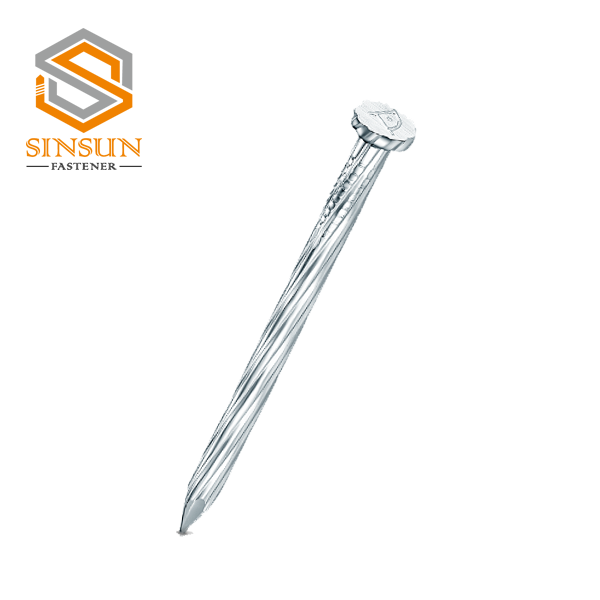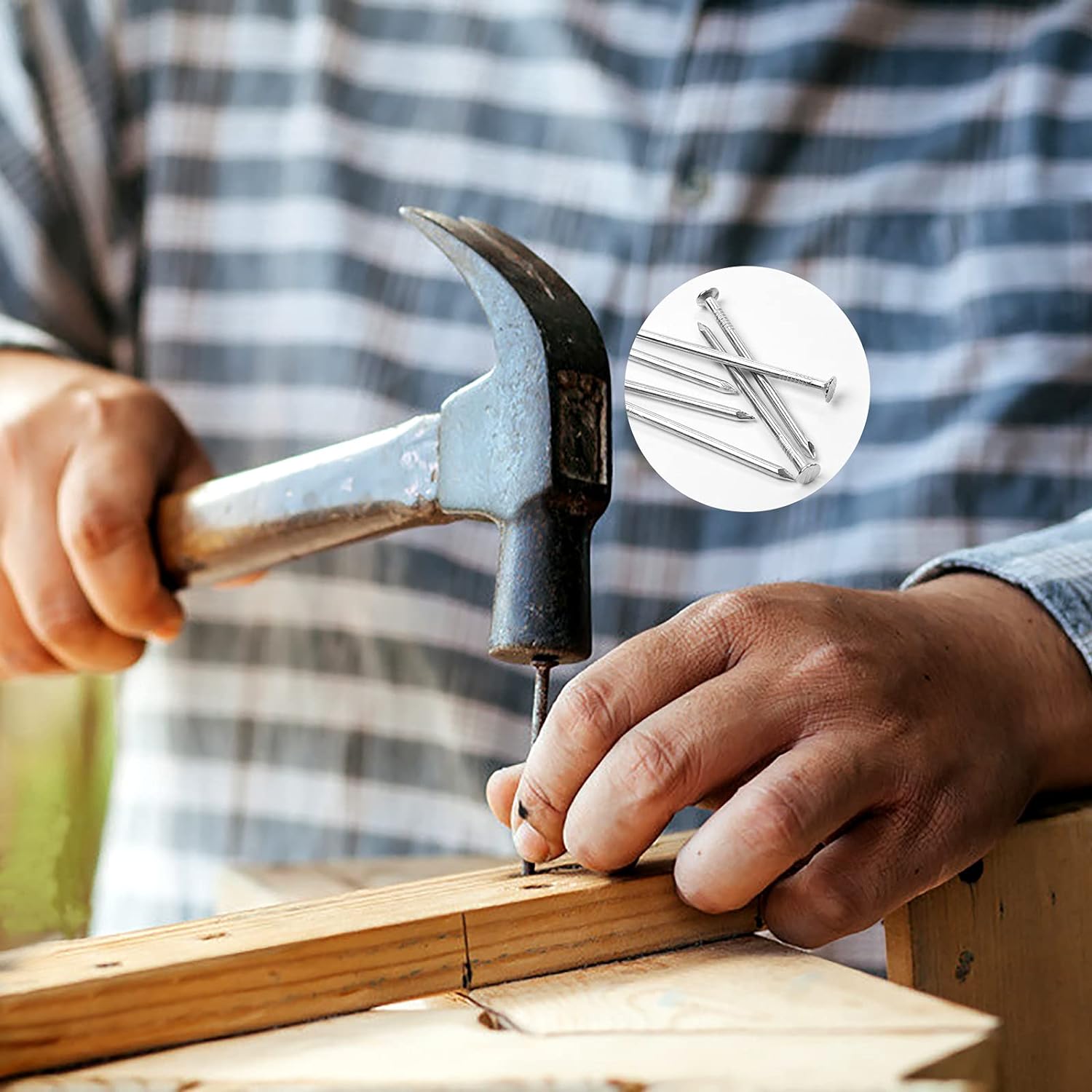Concrete nails, also known as steel nails, are a special type of nails made of carbon steel. These nails have a hard texture due to the material used, which is 45# steel or 60# steel. They undergo a process of drawing, annealing, nailing, and quenching, resulting in a strong and durable nail. Their primary function is to nail hard objects that cannot be penetrated by ordinary nails.
While there are various types of concrete nails available in the market, the most common ones include twilled shank concrete nails, straight fluted shank concrete nails, smooth shank concrete nails, and bamboo concrete nails. Each type of concrete nail has its own unique features and is suited for different applications.
The twilled shank concrete nail is characterized by its twisted, ribbed appearance, which enhances its holding power. This type of nail is specifically designed to provide a firm grip in concrete and masonry surfaces. It is commonly used in construction projects that require fastening materials to these types of surfaces.
In the other hand, the straight fluted shank concrete nail has a straight, smooth shank with grooves running parallel to it. This design offers improved resistance against withdrawal forces and provides a secure hold in concrete and similar materials. It is ideal for applications where a stronger grip is required.
Smooth shank concrete nails, as the name suggests, have a smooth surface without any grooves or ribs. They are commonly used in applications where easy insertion is essential, such as attaching wood to concrete or securing formwork during construction.
Bamboo concrete nails are specifically designed for fastening bamboo materials. They have a larger head, which provides better gripping power on bamboo surfaces. These nails are commonly used in bamboo flooring, furniture manufacturing, and other applications where bamboo is the primary material.
Now let's discuss the use and removal of concrete nails. Before using concrete nails, it is crucial to determine the correct size and type of nail required for the specific application. The length and thickness of the nail should be appropriate to ensure the desired level of penetration and holding power.
To use concrete nails, start by positioning the object or material to be nailed on the concrete surface. Hold the nail firmly with a hammer or nail gun, keeping it perpendicular to the surface. Apply sufficient force to drive the nail through the material and into the concrete. Ensure that the nail is driven in straight, as any deviation can weaken its grip.
Once the nail is securely in place, it is essential to check its alignment and stability. If required, additional nails can be inserted to provide stronger support. In some cases, pre-drilling a hole slightly smaller than the nail diameter can help facilitate easier insertion.
When it comes to removing concrete nails, caution must be exercised to prevent any damage to the surrounding structure or material. To remove a concrete nail, use pliers or a claw hammer to grip the nail's head firmly. Gently and slowly pry the nail out, ensuring that it is extracted straight without any forceful movements. If necessary, tapping the back of the pliers or claw hammer can help loosen the nail's grip.
In conclusion, concrete nails are specialized nails made of carbon steel, known for their hard texture and durability. They come in various types, including twilled shank, straight fluted shank, smooth shank, and bamboo nails. These nails find applications in construction and other industries where a strong grip on concrete or hard materials is required. When using concrete nails, proper size and type selection, as well as cautious removal, are essential to ensure optimal performance and prevent any potential damage.
Post time: Dec-05-2023



